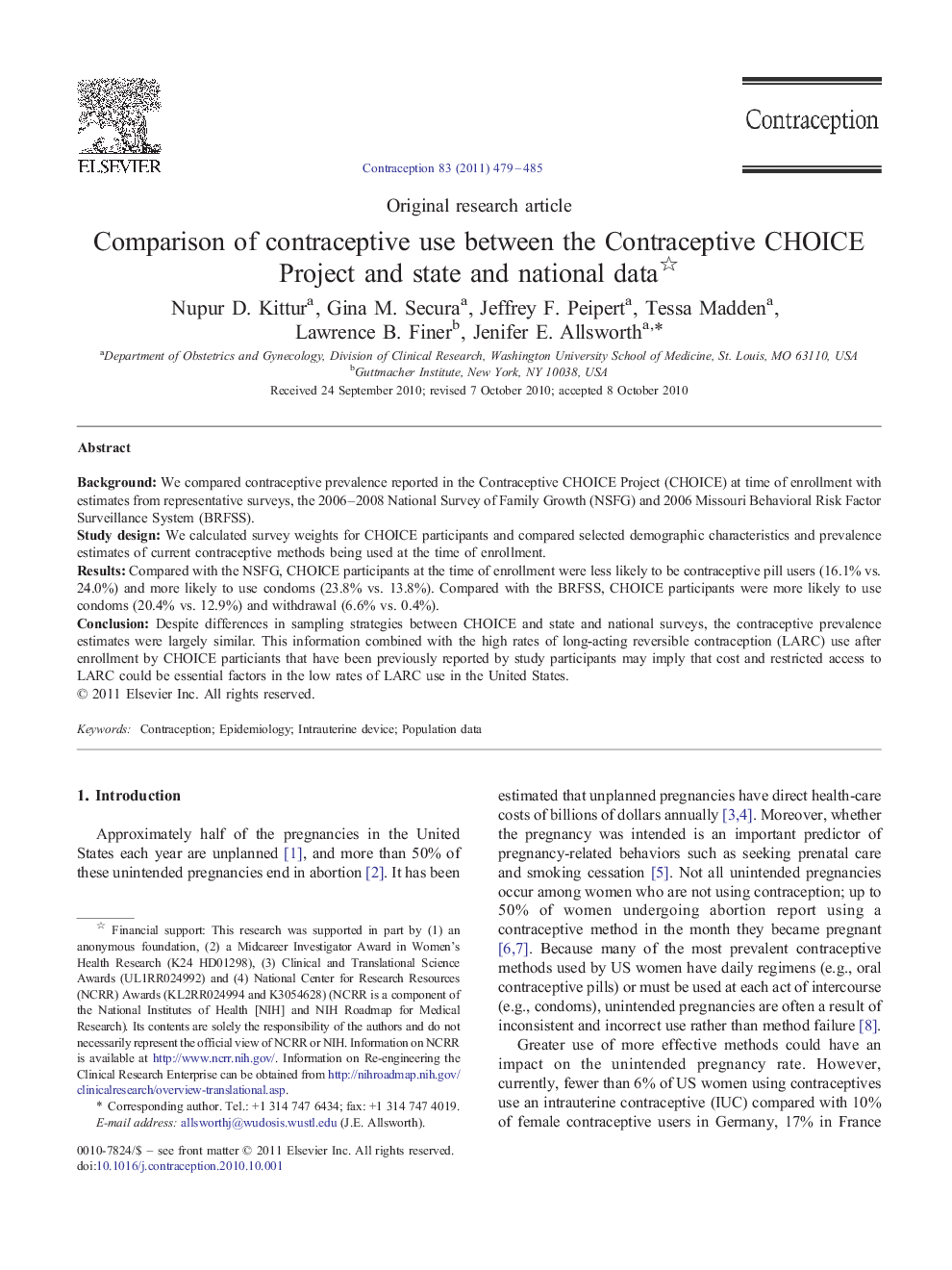| Article ID | Journal | Published Year | Pages | File Type |
|---|---|---|---|---|
| 3914060 | Contraception | 2011 | 7 Pages |
BackgroundWe compared contraceptive prevalence reported in the Contraceptive CHOICE Project (CHOICE) at time of enrollment with estimates from representative surveys, the 2006–2008 National Survey of Family Growth (NSFG) and 2006 Missouri Behavioral Risk Factor Surveillance System (BRFSS).Study designWe calculated survey weights for CHOICE participants and compared selected demographic characteristics and prevalence estimates of current contraceptive methods being used at the time of enrollment.ResultsCompared with the NSFG, CHOICE participants at the time of enrollment were less likely to be contraceptive pill users (16.1% vs. 24.0%) and more likely to use condoms (23.8% vs. 13.8%). Compared with the BRFSS, CHOICE participants were more likely to use condoms (20.4% vs. 12.9%) and withdrawal (6.6% vs. 0.4%).ConclusionDespite differences in sampling strategies between CHOICE and state and national surveys, the contraceptive prevalence estimates were largely similar. This information combined with the high rates of long-acting reversible contraception (LARC) use after enrollment by CHOICE particiants that have been previously reported by study participants may imply that cost and restricted access to LARC could be essential factors in the low rates of LARC use in the United States.
